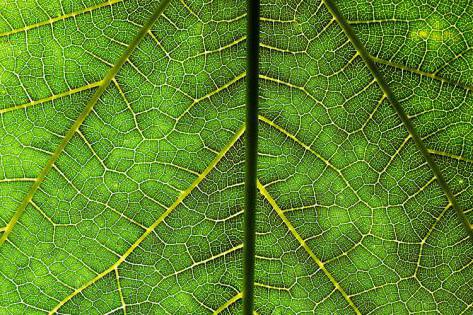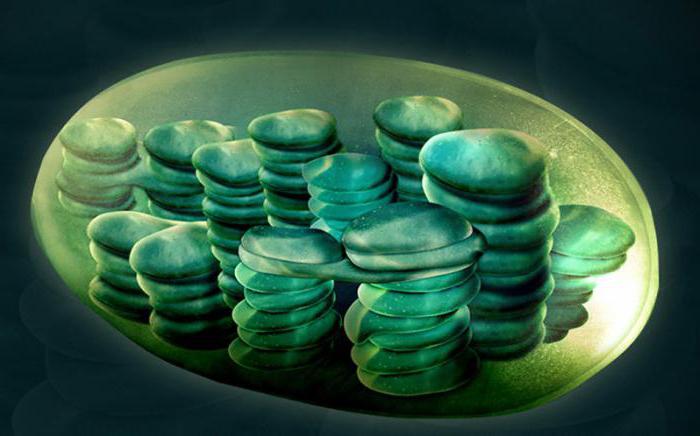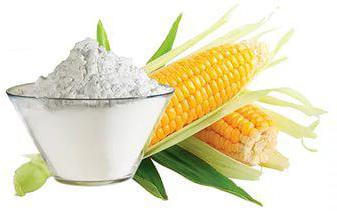Columnar singularity of the budov and їkh functions of the little ones. Peculiarities of the Budova and the columnar tissue of the fabric. Palisadna (columnar) tissue on the leaf plate of roslin
Clayts of columnar fabric are knitted in a total of one or two rows, one to one. A lot of fabrics to cover 3 / 4-4 / 5 of all chloroplasts of the sheet, so there is an assimilation of carbon dioxide. To the extent of the mesophilicity and the particularity of columnar and spongy fabrics, there is a great inflow to rob the intensity of illumination. Have tinovitrivaly roslin columnar fabric to be stored in one ball of funnel-shaped for the shape of a keratin. And in the case of the roslin, a columnar parenchyma seems to have a very good living space.
Photosynthesis occurs in the columnar tissue of the leaf.
Sponge fabric is the main fabric of the sheet. roztashovany, closer to the lower sheet shkіrtsі, shade the fluff shape.
Sponge tissue is used for photosynthesis, gas exchange and transpiration.
Woven fabrics are called woolen fabrics, which cover the sheet from the hanging, from the temperature difference, from the mechanical ones. Pokrivn_ fabrics can be used for epiderma, cork.
Epidermis is primordial, covering the tissue, covering the leaves and young stems. Epiderma is stored in one row of living, socially wandering cells. There are few chloroplasts in them.
Stinky klin zvivisty zvdyak, zavdyak what to reach the mitsne to get from you. The comradeship of glasses is not the same-name, more tovsti, lower than that, and cover the cuticle with a ball.
The cork is dead cells, the walls will slip through with fat-like speech suberin.
Woven fabrics serve for the storage of the growth from the hanging and the infusion.
Roslin has a dumb nervous system, a little stench can be heard from children to stimulate electrical signals to generate nerve impulses
Votnya. I tse serve for mbіlіzatsіі forces of a roslini.
At the twins.
The entire nervous system is stimulated by the nerve tissue. Nerve tissue is stored from the nerve cells-neurons and connected with them anatomically and functionally additional cells of neurology. Neurons define specific functions, і, structural and functional unit of the nervous system. Nervous system regulating the func- The nervous system will establish an interconnection between the body and the center of the brain.
Buvaє three types of textile fabric: cross-striped, smooth and heart. The cross-striped tissue is stored from the bezel-free fiber-like fiber-like cells. All skeletal muffs, movable muses, mouth emptyings, pharynx, larynx, upper part of the stravohode, mimic, diaphragm are stimulated by it. Peculiarities of the cross-threading fabrics-fastness. Klitini smooth m'yazovoy fabric spindle-shaped, single-core. To take part in the establishment of the herbal tract, slash, blood-bearing and lymphatic vessels. The peculiarities of smooth tissue tissue-mimicry and low strength is very fast.
Be affectionate to say what functions and specialties of Budov and the most frequent and spongy clitins
- Budova typical green leaf
Posted in Budova organiv - List
In the first place, there is a typical green leaf that can be seen in Budova, looming on the top rank of the mesophyte leaf, i.e. E. Roslin, dated to the moment of living from the middle minds, for example, lingering on bows. At the connection with the functions of photosynthesis and transpiration, green leaves are whole, which is sessile, or, in the meaning of the world, which is stemmed, is a thin plate on the surface, meaningful to the age.
At the plate sheet, 4 groups of fabrics can be developed behind the additional magnifying glass: 1) at the edge - shkirku, or epidermis; 2) basic, lively - mesophyll1; 3) conductive - vessel-fibrous bundles (veins); 4) mechanic, which gives the leaf a hardness, which is the basis of the position of the leaf in the open space.
Epidermis. Leakage sheet from each side curly fabric- epidermis, or shkirkoyu (Fig. 174). From the bud's shkirki, they were already familiarized earlier, with the grafting of fabrics (p. 109).
Epidermis of the stem move to the petiole and leaf blade. The shkіrochka is stored in one ball of tabular, sculpted worms without intercellular spaces. The name of the cych clin is heavily shaken and covered with a cuticle. Klіtini shkіrki are alive; the stench does not take revenge on chlorophyll grains. Miscellaneous, even at the bottom of the boat, there are food in the epidermis.
On the surface of the arkusa, the clits of the shkirki do not skip the same: the clitins of the shkirki, which curl the lower side of the leaf, will grow more and more varied and more vivid than the clit of the upper skirka (Fig. 86). The soundness of the outlines of the cells and the upper and lower skins will be appreciated when the growth of the leaf grows. The upper shkіrka is seen from the lower curvature of the larger curvatures of the new walls of the cline and the larger society. The need for a ball of wax, such as wine, cuticles and cuticular balls in the clines of the upper skin are more significant, less in the cells of the lower skins. The hairs of the pubescent leaves rostashovuyutsya over and over, or navit viklyuchno on the lower bots of the arkush. Clitin shkirki, roasted over the wire beams, especially over the reinforcement and over the strands of mechanical fabrics, twisted in a straight line, parallel to the bundle, or the strand, and weakly zvivist.
Small. 174. The middle part of the radish leaf (Raphanus sativus) transversely rose:
e - upper epidermis (upper shkirka); y - prodichi in the lower school; in - airy empty space ("empty empty space"); g - palisadna fabric; n - spongy tissue; in the center - a fibrous bundle; ks - xylem; before - cambiy; f - phloem; h - sclerenchyma.
In bagatokh cereals, the shkirka is stored in one decile type, one of one type is strongly seen. In the middle of the leaf area, it is significant to support cells and cities. The ferns above the veins of the deyakі klіtini epіdermіsu, roztashovanі in a row, or one by one, reimagining to reach the standards, draw in vividly in the place of parenchyma or prosenchіm stereіd. Have the children of speckled flowers around the clytins revenge cistoles.
In most of our trees and chagarniks, the food is set only on the lower side of the leaf.
In terrestrial grasses, there is a large amount of food on the lower side and on the upper side of the leaf, a little on the upper side in the smallest part (Fig. 86).
Prodikhiv is mute at the upper shkirtsi in the large roslin with cracked nibbling leaves and in the roslin with even thin lower leaves. In roslin, with floating leaves on water, the prodiges are found near the upper skirts. In roslin, who live near water, or which are timed to a very low level, the stomata are not enough, because they do not become callous.
The frequency of stomata - the number of їх per 1 mm2 - in a large number of roselin it grows from 40 to 300: in wheat, for example, 50-70, in apple and plum - 250.
In a leaf that is vigorous in a dose (for example, in cereals), the food grows out in late rows, and the great length of the stomatal slit is parallel to the late axis of the leaf. On the surface of the leaf, the odor grows irregularly: the stink in the middle part of the leaf area is the best to grow
Differentiation between cells and tissues plays a great role in the development of the organism. It is possible to make adjustments for the skin cells at the factory: if the skin is a visitor only for the power of the function, the great result can be reduced to a shorter term. Those who want to be a living organism, as a life that can be stored up in such a foldable development and borrowed evolutionary nisha.
Also living organisms
Klіtina is a central structural and functional unit of all living things. Vinyatok hіba shо to become viruses is a non-literal form of life. Textile is the price of a cult and a small talk, which is the same for a budov, a function and a walk. Biology is based on її Budovu, as it is dictated by the level of organization of creatures or roslini.
Differentiation of clitin in animals and roslin grows more in ontogenesis. The skin from them is drawn from the fabric-perednik: if in the creatures there is a cetin, then in the roslin it is a meristem.
What kind of klіtina? The biology and structure of the cells allows the classification of two groups.
1. European cells. Prior to them, structural units of food and plant organisms are referred to.
2. Smells appear from the nucleus of the organelles. Before prokaryotyv to organisms submit bacteria.
Budova tvarinnaya klitini
Vivchennyam structure kіtin dealt with biology. Budova foodstuffs were built by Gukrito in the 19th century, and it will grow up to 20,000 years later.
A cell of tvarin is a cytoplasm, drained by a plasmalemma. The cytoplasm "floats" the organelles and the inclusion. Prior to organelles, lizosomes, mitochondria, Golgi apparatus, endoplasmic mesh, Peroxisomi. Included - chains, such as connections in the cytoplasm and check, no matter the stench will be needed to induce the structures of the cells.
On the vidminu from the roslinnoy, in the creature cells there is a vacuole and chloroplast. The visibility of the pre-curved complex is meant, for example, on the peculiarities of the deformation of the plasmalemma before the hour of the day.
Budova roslinnoi klitini
internal vmist roslinnaya klitini nabagato bagatshe, nіzh tvarinnoi. Firstly, two membrane structures - chloroplasts - can be created here. The first function of the field is in a safe way, which is even more important for roslin from the point of view of a supplementary energy supply, as well as glucose.
Roslynna klitina zovni dodatkovo pokryta clitnaya stinkoy... It is stored from cellulose fibers, and in the first contact there are two susceptible cells present with pectin. Here, the strained callous complex does not allow contacting in the same way as to touch the creatures of the church. The leading role in the transport of the city of Budov is klitini. 6th class, biology in what is not so badly, does not give information about desmosomes - special times in the classroom, which serve to transfer the speeches from one cell to the inside. Behind additional structures, vacuoles can be contacted through a small diameter mistok.
Vacuole is the main feature of the food cultine from Russia. The function of the polymer in the storage of chemically active alkaloids, acids, calcium, which additionally helps to stabilize the osmotic pressure. Moreover, alkaloids and acids can have a negative effect on the cytoplasm, which is to blame for being in an isolated organelle with a special membrane, through which molecules of such a size are uncomfortably penetrated. The vacuole membrane is called tonoplast.
All the peculiarities of the budov and the columnar cells of the fabric are identical with the plan of the warehouse of the tall cells. 
prokaryotic cells
Bacteria (as representatives of prokaryotes) are evolutively fewer organisms. Bacterial cellin is a cytosol, exuded by a membrane, cell wall and mucous capsule. In the middle, mute organelles, which are used by eukarot, are silent. The nucleus is also visible, and the entire genetic material of representations in most bacteria is less than one chromosome.
Metabolism of cellini is subject to special structures - Mesosomy. The stench is the virist of the cytoplasmic membrane in the middle of the cell, and its function is in the nature of photosynthesis, which is about photosynthetic bacteria.
The visibility of the core of the supplementary help is the speed of the transcription and translation. There is also an increase in the variety of the binar subtype of the cell: a colony of bacteria can increase its number of skin cells of 20 chilines.

function of klitini
The yak cell is structural and functional, the unit of all living things. development functions, Pov'yazanі from pіdtrimannyam zhitєdіyalnosti organіzm. The main role here is from Budova Klitini. 6th class, biology in what was implanted on the cob, dictating to us the main features of the organization of the clerical apparatus.
Determination of clitin roslin is a whole process of access to parts, as a result of which the meristem is established without the help of tissues to the body: curvature, visual, how to carry out, mechanical. The skin cells of the tissue are rendered one kind of one for the budget and viconuable functions. For example, zavdannya pokrivnykh krytin- do not let foreign agents pass through the middle of the body, if these are required for the transport of organic and mineral speech along the line.
The interaction of the client is reached by special contacts, which I call plasmodesmi. Robot regulation is based on biochemical level for additional enzymes and metabolites.
Leaf - vegetative organ of roslin
The function of the vegetative organs of the field in the growing life of the growing line at the optimal level. The leaf can also be applied to the whole group, which is mainly concerned with photosynthesis.
One hundred percent of the tissue is the main photosynthetic tissue of the leaf. It is stored in parenchymatous cells, in which there are abundant chloroplasts. Clumps of columnar tissue are located closer to the upper surface of the leaf, and more sleepy energy and, apparently, increased efficiency and productivity of photosynthesis.
Likewise, up to the fold of the leaf, there is a spongy tissue, as well as a lack of chloroplasts, the protean number of nagato is less in the case of semi-garden parenchyma. On the right, in fact, the main function of the keratin of the spinal tissue is the price of gas exchange for the rakhunok of the great intercellulars. 
Peculiarities of Budova and Columnar Tissue of Leaf Tissue
Palisadna parenchyma is located in the upper balls of the leaf, akumulyuvati more number sleepy energy. It is necessary for the effective passage of the light and dark stages of photosynthesis, as it passes only in the mind of illumination.
One hundred percent of the cell is the cell of a cylindrical shape, the main function of which is the process of photosynthesis. For the whole, in the cells of the columnar tissue, there are dozens of chloroplasts, which are roasted along the periphery of the cells. The same growth in the vastness of the cytosol is explained by the changes in the surface of the dormant exchanges.
C4-roslin tropical i ekvatorialnyh lisiv the leaf of the trocha grows. They have columnar tissue located in the uppermost organ and in the lowermost balls. It is linked with the peculiarities of the dark stage of photosynthesis in roslin cichs.
The peculiarities of the budovy columnar tissue and vikorizovyvayutsya dew for the improvement of the efficiency of photosynthesis. 
So also photosynthesis?
Photosynthesis is a whole lot of biochemical process, in which energy is set up in the ATP and glucose - in the carbohydrate, which is stored with the growth.
Photosynthesis takes place in two stages: light and dark. From the hour of the first stage to see the photolysis of water, seeing the bitter speech and synthesis of ATP, NADPH. The dark stage of photosynthesis is a cascade of past reactions, resulting in the synthesis of glucose or analogs of sugar. 
Why do roslin need photosynthesis?
Roslin reserves a large amount of starch for normal living conditions. Starch is a polysaccharide, the monomer is glucose. It is also not marvelous, but in the body of a growth from the most powerful classes organic speeches the largest amount of money to borrow in carbohydrates. 
The peculiarities of the columnar tissue of tissue allow to efficiently shake down the light energy, which is necessary for the prevention of biochemical reactions to photosynthesis. Before the hour of the dark stage, glucose and hexose are synthesized, which are stored at the great polymer molecules of starch in parenchymal cells. It is possible to sprinkle starchy grains in the chloroplasts themselves for an hour.
